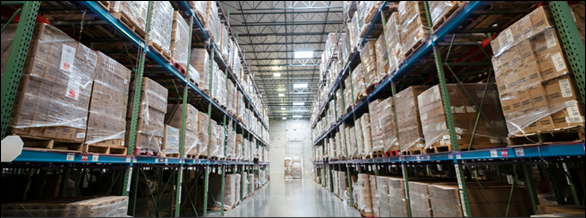Consolidation Is an Easy Way to Make a Big Difference – Hub Group

Shipment consolidation is becoming an increasingly more accessible and viable option, offering benefits for both manufacturers and distributors.
Consolidation isn’t just for larger companies anymore; it’s becoming an increasingly more accessible and viable option for any supply chain. While consolidation has seen rapid advancement in an effort to remedy service-sensitive relationships or tough network segments, the advantages are universal and can be applied to inbound, vendor, and pool distribution networks—each sharing five big advantages:
1. Improved Supply Chain Performance
The likelihood of shipment failure increases with the length of haul and handling at each terminal in LTL shipping. Unpredictable variables at each facility put shipments at risk, culminating in a higher failure rate than truckload moves. With consolidation, a shipper can fill an entire trailer with multiple LTL orders and send it to a facility to mix with other cargo. At some consolidation facilities the operator will have a sailing schedule to designated consignees, reducing costs, enabling more effective planning, and improving service.
2. Significant Cost Savings
With the advantage of truckload pricing at an LTL size, consolidation provides significant opportunities for cost savings. With the objective of maximizing the trailer utilization, freight from multiple vendors or different parts of a supply chain can be staged at a central location to be sorted, combined, and loaded into full truckloads. The gained advantage of the faster transits from the consolidation point means some shippers can convert their leg-one move to a more affordable shipping method, such as intermodal, providing even greater savings.
3. New Levels of Efficiency
Consolidated truckload shipping brings many advantages to both shippers and receivers, counter to the traditional LTL model—specifically when it comes to facility management. Inbound LTL trucks typically carry 10% fewer pallets than full truckloads, meaning to fulfill the same amount of orders, there could be 10% more trucks waiting at distribution centers. When it comes to unloading, LTL shipments take longer to inventory, check, and document OS&D. For a truckload shipment, unloading is fast with a consolidated order and can increase capacity fluidity at facilities.
4. Enhanced Ease of Operation
What might seem like a complicated process is actually handled by a sophisticated management company on the shipper and/or consignee’s behalf. These solutions give the consignee a consolidated buying group for all vendors in the program, including one bill per shipment door-to-door. For a shipper, the ability to load an entire trailer with freight at origin removes the burden of managing the LTL process. These reductions in administrative work for both consignees and shippers alike allow for more time to focus on supply chain strategy and continuous improvement—advancing your enterprise goals.
5. A Greener Network
The biggest benefit that commonly goes unnoticed with consolidation is the enormous chunk of carbon dioxide emissions cut out of supply chains. With fewer idle trucks waiting at distribution centers, a reduction of trucks on the road, and the potential decrease in mileage versus multi-stops, a large amount of carbon dioxide emissions is avoided.
Supply chains across the globe are riding a wave of innovation, fueled by technology and driven by a change in consumer behavior. Companies can implement a consolidation strategy by aligning with a provider that can help untangle the current process and develop an end-to-end solution for each shipment. Regardless of the method a shipper or consignee chooses to take, consolidation is an easy way to get quick wins for your supply chain.

